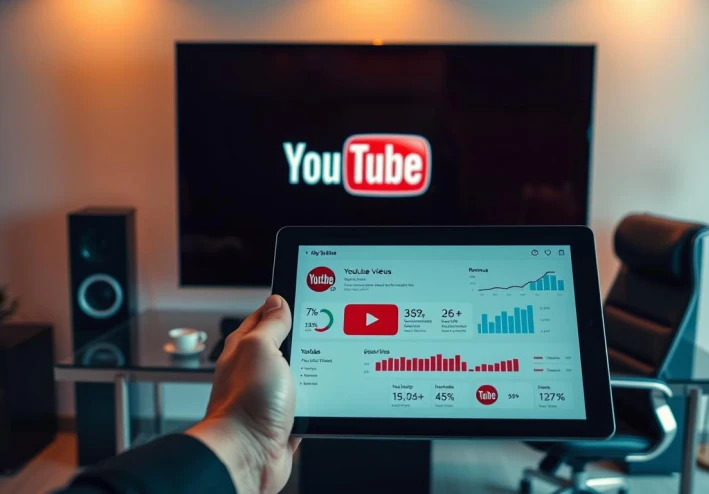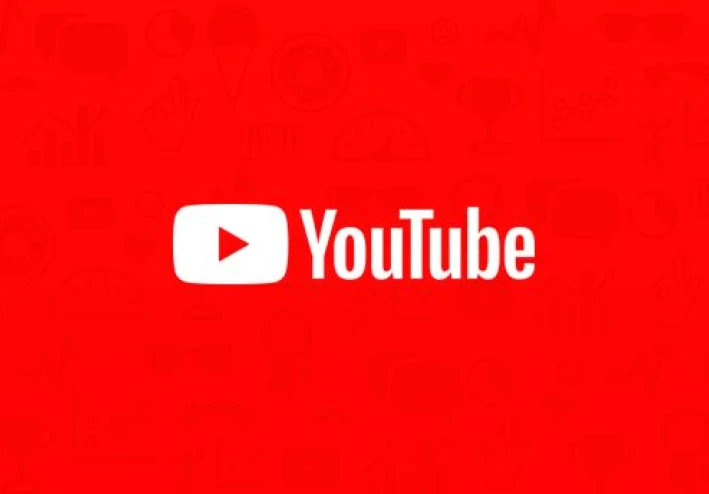Earn Income from YouTube: Tips to Maximize Profits
With millions of active users, YouTube has become a lucrative platform for creators to earn online income through various monetization strategies.
Video marketing is a key component of a successful YouTube channel, enabling creators to reach a vast audience and increase their earnings.

To maximize profits on YouTube, it's essential to understand the platform's monetization policies and leverage the most effective strategies for your content.
Key Takeaways
- Understand YouTube's monetization policies
- Develop a video marketing strategy
- Optimize your content for maximum visibility
- Engage with your audience to increase earnings
- Explore various monetization options on YouTube
Understanding YouTube's Monetization Requirements
YouTube's monetization policies are designed to ensure that creators meet certain standards before they can start earning money. To achieve this, YouTube has established a set of requirements that must be met to participate in the YouTube Partner Program.
YouTube Partner Program Eligibility Criteria
To be eligible for the YouTube Partner Program, creators must comply with YouTube's community guidelines, terms of service, and copyright policies. Additionally, they must have at least 1,000 subscribers and 4,000 watch hours in the past 12 months. Meeting these criteria is crucial for monetizing a YouTube channel.
Setting Up AdSense and Payment Methods
Once a creator is accepted into the YouTube Partner Program, they need to set up an AdSense account to receive payments. This involves providing personal and financial information, including a tax identification number. Creators must also choose a payment method, such as a bank transfer or check, to receive their earnings.
Maintaining Good Standing with YouTube
To continue monetizing their content, creators must maintain good standing with YouTube by adhering to its policies and guidelines. This includes avoiding copyright infringement, following community guidelines, and ensuring that their content is advertiser-friendly.
By understanding and complying with YouTube's monetization requirements, creators can successfully monetize their content and build a sustainable career on the platform.
Profit from the Internet from YouTube: Revenue Streams Overview
Maximizing profits on YouTube involves understanding the various revenue streams available. YouTube creators can leverage multiple sources of income to enhance their earnings.
https://www.youtube.com/watch?v=KvDHMeJJ_cY
Ad Revenue and How It Works
YouTube's primary revenue stream is ad revenue, generated from ads displayed before, during, and after videos. Creators earn money based on the number of views and clicks on these ads. Ad revenue is a crucial component of YouTube's monetization strategy, allowing creators to earn from their content.
Channel Memberships and Fan Funding
Channel memberships enable viewers to support their favorite creators with monthly payments in exchange for exclusive content and perks. This feature allows creators to build a steady income stream and foster a closer connection with their audience.
Super Chat and Super Stickers
During live streams, viewers can purchase Super Chat and Super Stickers to highlight their messages. This feature not only enhances the live streaming experience but also provides creators with an additional revenue stream.
YouTube Premium Revenue Share
YouTube Premium is a paid subscription service that offers ad-free videos, exclusive content, and offline playback. Creators earn a share of the revenue generated by YouTube Premium based on the watch time of their content by Premium subscribers.
Creating Content That Attracts Higher Ad Rates
The key to higher ad rates on YouTube lies in creating content that is not only engaging for viewers but also complies with advertiser-friendly guidelines. To maximize ad revenue, creators must understand the factors that influence ad rates and tailor their content accordingly.
Understanding CPM and RPM Metrics
CPM (Cost Per Mille) and RPM (Revenue Per Mille) are crucial metrics for YouTube creators. CPM refers to the cost advertisers pay for 1,000 ad impressions, while RPM measures the revenue earned per 1,000 video views. Understanding these metrics helps creators optimize their content for better ad performance. For instance, a high CPM indicates that the content is attractive to advertisers, potentially leading to higher earnings.
Advertiser-Friendly Content Guidelines
YouTube has strict guidelines for advertiser-friendly content. Creators must ensure their videos comply with these rules to maintain monetization. This includes avoiding explicit language, graphic content, and controversial topics that may not appeal to all advertisers. By adhering to these guidelines, creators can ensure their content is eligible for a wider range of ads, potentially increasing revenue.
Niche Selection for Maximum Revenue
Choosing the right niche is vital for maximizing ad revenue. Certain niches, such as finance, technology, and health, tend to attract higher-paying ads due to advertiser demand. Creators should research profitable niches and consider their audience's interests when selecting topics.
Seasonal Content Planning for Ad Rate Peaks
Ad rates can fluctuate seasonally based on advertiser demand. Planning content around peak seasons, such as holidays or major events, can help creators capitalize on higher ad rates. For example, content related to holiday shopping or summer travel may attract more advertisers during specific times of the year.
Key Strategies for Higher Ad Rates:
- Understand and optimize for CPM and RPM metrics.
- Comply with YouTube's advertiser-friendly content guidelines.
- Select profitable niches that attract high-paying ads.
- Plan content around seasonal peaks in ad demand.
Optimizing Videos for Monetization Success
Success on YouTube isn't just about creating great content; it's also about optimizing it for monetization. To achieve this, creators must focus on several key strategies that enhance their video's visibility and appeal to both viewers and advertisers.
Strategic Keyword Research for Discoverability
Effective keyword research is the foundation of video optimization. By identifying relevant and high-traffic keywords, creators can increase their video's discoverability. Tools like Google Keyword Planner and TubeBuddy can help in finding the right keywords.
Crafting High-Converting Titles and Thumbnails
Your video's title and thumbnail are the first things viewers see. Crafting titles that are both informative and enticing, along with thumbnails that grab attention, can significantly improve click-through rates. Use action words and questions to pique interest.

Description and Tag Optimization Techniques
A well-written description and the right tags can further enhance your video's visibility. Include your target keywords in the description and use relevant tags to help YouTube understand your content.
Strategic Video Length and Ad Placement
The length of your video and where you place ads can impact your earnings. Longer videos can accommodate more ads, but they need to be engaging to maintain viewer retention. Strategically placing ads at natural breaks can improve viewer experience.
| Video Length | Ad Placement Strategy | Potential Earnings |
|---|---|---|
| 0-5 minutes | Pre-roll ad | Low |
| 5-15 minutes | Pre-roll and mid-roll ads | Medium |
| 15+ minutes | Multiple mid-roll ads | High |
By implementing these strategies, creators can optimize their videos for better monetization success. It's a continuous process that requires monitoring and adjusting based on performance data.
Building and Engaging Your Audience
To monetize your YouTube presence effectively, you need to build and engage your audience. A loyal viewer base not only increases your watch time but also opens up more revenue streams through various YouTube features.
Community Building Strategies
Creating a community around your channel is vital. This can be achieved by:
- Responding to comments and engaging in conversations
- Hosting live streams and Q&A sessions
- Encouraging viewer participation through contests and challenges
These strategies help foster a loyal community that supports your content.
Increasing Watch Time and Retention
To increase watch time, focus on:
- Creating high-quality, engaging content
- Optimizing video titles and thumbnails
- Using playlists to keep viewers engaged
Improving retention rates is crucial for YouTube's algorithm, as it indicates the value of your content.
Cross-Platform Promotion Tactics
Promoting your YouTube content on other platforms can drive traffic to your channel. Utilize:
- Social media platforms like Facebook, Twitter, and Instagram
- Collaborations with other creators
- Embedding videos on your website or blog
Cross-platform promotion expands your reach and attracts new viewers.
Leveraging YouTube Shorts for Channel Growth
YouTube Shorts offer a new way to engage your audience with short-form content. Use Shorts to:
- Provide bite-sized information or entertainment
- Drive traffic to your longer videos
- Experiment with different content styles
Leveraging YouTube Shorts can help grow your channel by attracting a broader audience.
Leveraging YouTube Analytics for Profit Growth
Effective use of YouTube Analytics can significantly boost your channel's revenue. By understanding and leveraging the data provided, creators can make informed decisions to optimize their content and increase their earnings.
Key Metrics to Track for Revenue Optimization
To maximize profits, it's essential to track key metrics such as watch time, audience retention, and earnings reports. These metrics provide insights into how your content is performing and where improvements can be made.
Audience Insights for Content Planning
YouTube Analytics offers valuable audience insights, including demographics, interests, and viewing habits. Utilizing these insights can help creators develop content that resonates with their audience and attracts new viewers.
https://www.youtube.com/watch?v=DMpa1BEs5Uw
A/B Testing for Higher Performance
A/B testing involves comparing different versions of your content to see which performs better. By applying A/B testing to elements like titles, thumbnails, and tags, creators can refine their strategy for higher engagement and revenue.
Using Analytics to Identify Revenue Opportunities
Analyzing your YouTube Analytics data can reveal new revenue opportunities. For instance, identifying top-performing content can help you create similar content that attracts high-paying ads.
By leveraging YouTube Analytics effectively, creators can gain a competitive edge and maximize their profit growth.
Diversifying Income Beyond YouTube Ads
While YouTube ads can be a significant source of revenue, exploring alternative income streams can help creators achieve financial stability. By diversifying their income, creators can reduce their dependence on a single revenue source and build a more sustainable career.
Affiliate Marketing Integration Strategies
Affiliate marketing is a lucrative way for creators to earn commissions by promoting products or services in their content. To integrate affiliate marketing effectively, creators should choose products that align with their niche and audience interests. This can be done by including affiliate links in video descriptions or using affiliate marketing platforms like Amazon Associates or ShareASale.
For instance, a beauty YouTuber can partner with a makeup brand, promoting their products and earning a commission for each sale made through their unique referral link. It's essential to disclose the affiliation to the audience to maintain transparency and comply with Federal Trade Commission (FTC) guidelines.
Negotiating Sponsored Content Deals
Sponsored content is another profitable avenue for creators. Brands are willing to pay for product placements or dedicated videos featuring their products. To negotiate sponsored content deals effectively, creators should have a clear understanding of their audience demographics, engagement rates, and content quality.
When negotiating, creators should be prepared to provide metrics that demonstrate their influence and the potential return on investment for the brand. This can include average view counts, engagement rates, and audience demographics. Platforms like HYPR or AspireIQ can connect creators with brands looking for sponsored content opportunities.
Creating and Selling Digital Products
Creating and selling digital products is a fantastic way to diversify income. Creators can develop products that cater to their audience's needs, such as e-books, online courses, or exclusive content. Platforms like Gumroad, Teachable, or Kajabi can host and sell these digital products.
For example, a fitness YouTuber can create a workout plan or a nutrition guide, selling it to their audience. This not only generates additional income but also helps in building a loyal community.
Patreon, Memberships, and Alternative Funding Platforms
Platforms like Patreon allow creators to earn recurring revenue from their fans in exchange for exclusive content, early access, or behind-the-scenes insights. Memberships and subscription-based models can provide a steady income stream.
Other alternative funding platforms, such as Ko-fi or Buy Me a Coffee, enable fans to support their favorite creators with one-time donations or recurring tips. These platforms offer a way for creators to receive support directly from their audience.
Tax and Legal Considerations for YouTube Creators
As a YouTube creator, understanding the tax implications of your earnings is crucial for financial planning. YouTube creators must comply with various tax and legal requirements to maintain their profitability and avoid potential legal issues.
Understanding U.S. Tax Obligations for Creators
YouTube creators earning income from ads, sponsorships, and merchandise sales are subject to U.S. taxation. The IRS considers YouTube earnings as taxable income, which must be reported on the creator's tax return. Creators are required to file Form 1040 and Schedule C to report their business income and expenses.
Record-Keeping and Expense Tracking
Accurate record-keeping is essential for YouTube creators to track their income and expenses. This includes maintaining records of ad revenue, sponsorship deals, and business-related expenses. Creators can deduct eligible expenses on their tax return to reduce their taxable income.
International Tax Considerations
YouTube creators residing outside the United States are subject to different tax rules. The U.S. withholds taxes on certain payments made to foreign creators. Creators must understand their tax obligations in their country of residence and comply with relevant tax treaties.
Business Structure Options for YouTubers
YouTube creators can operate as sole proprietors, single-member LLCs, or other business structures. Choosing the right business structure can help minimize tax liabilities and provide liability protection. Creators should consult with a tax professional to determine the best structure for their business.
By understanding and complying with tax and legal requirements, YouTube creators can protect their business and maximize their earnings.
Scaling Your YouTube Business
Scaling a YouTube business requires strategic planning and execution. As your channel grows, it's essential to adapt your strategies to maintain and increase your revenue.
Building a Production Team and Workflow
To scale your YouTube business, consider building a production team to help with content creation, editing, and other tasks. This team can include freelancers or full-time employees, depending on your budget and needs. Establishing a workflow ensures that all tasks are completed efficiently and on time.
Content Calendar and Consistency Strategies
A content calendar helps you plan and schedule your content in advance, ensuring consistency and reducing last-minute scrambles. Consistency is key to keeping your audience engaged and coming back for more.
Multiple Channel Management
For advanced YouTubers, managing multiple channels can be a viable strategy to expand your reach and diversify your content. This requires careful planning and management to ensure that each channel maintains its own identity and audience.
Expanding into Related Business Ventures
Successful YouTubers often explore business ventures related to their niche, such as creating digital products, offering services, or partnering with other creators. These ventures can provide additional revenue streams and help grow your brand.
By implementing these strategies, you can effectively scale your YouTube business and achieve long-term success.
Common Monetization Mistakes to Avoid
Creators looking to earn significant income from YouTube must be aware of and avoid common monetization mistakes. Understanding these pitfalls can help ensure a stable and growing revenue stream.
Copyright Infringement and Fair Use Issues
One of the most significant risks to YouTube monetization is copyright infringement. Using copyrighted material without permission can lead to video takedowns, channel strikes, or even account termination. Understanding fair use principles is crucial, but it's equally important to be cautious when using copyrighted content.
Policy Violation Pitfalls
YouTube's community guidelines and advertiser-friendly content policies are strict. Violating these policies can result in demonetization or worse. Creators should familiarize themselves with YouTube's policies to avoid inadvertently violating them.
Neglecting Analytics and Performance Data
Analytics play a crucial role in optimizing content for better performance and higher earnings. Neglecting to analyze performance data can lead to missed opportunities for growth. Creators should regularly review their YouTube Analytics to understand their audience and adjust their content strategy accordingly.
Failing to Diversify Revenue Streams
Relying solely on AdSense revenue can be risky. Diversifying income streams through methods like affiliate marketing, sponsored content, and selling digital products can provide a more stable financial foundation.

| Common Mistake | Consequence | Prevention Strategy |
|---|---|---|
| Copyright Infringement | Video takedown or channel strike | Use original content or obtain necessary permissions |
| Policy Violation | Demonetization or account termination | Familiarize yourself with YouTube's policies |
| Neglecting Analytics | Missed opportunities for growth | Regularly review YouTube Analytics |
| Failing to Diversify Revenue | Financial instability | Explore alternative income streams like affiliate marketing |
Conclusion: Building a Sustainable YouTube Career
Creating a sustainable YouTube career requires a multifaceted approach that encompasses high-quality content creation, strategic video marketing, and diversified online income streams. By understanding YouTube's monetization requirements and leveraging various revenue streams, creators can maximize their profits and build a loyal audience.
Effective content creation is at the heart of a successful YouTube channel. By producing engaging, advertiser-friendly content and optimizing videos for discoverability, creators can increase their online income and expand their reach. Additionally, leveraging YouTube Analytics to track key metrics and audience insights can help creators refine their content strategy and improve their video marketing efforts.
To build a sustainable YouTube career, creators must also be aware of the potential pitfalls, such as copyright infringement and policy violations. By avoiding common monetization mistakes and staying up-to-date with YouTube's policies, creators can ensure long-term success and stability in their online income streams. By following these strategies and staying committed to their goals, creators can build a thriving YouTube channel that generates significant revenue through video marketing and other online income sources.
FAQ
What are the eligibility criteria for the YouTube Partner Program?
To be eligible for the YouTube Partner Program, you must have at least 1,000 subscribers and 4,000 watch hours in the past 12 months, comply with YouTube's community guidelines, and live in a country where the YouTube Partner Program is available.
How do I set up AdSense and payment methods on YouTube?
To set up AdSense and payment methods on YouTube, go to the Monetization tab in YouTube Studio, follow the prompts to create an AdSense account, and provide the required tax information and payment details.
What is the difference between CPM and RPM on YouTube?
CPM (Cost Per Mille) refers to the cost per 1,000 ad impressions, while RPM (Revenue Per Mille) is the revenue earned per 1,000 views, taking into account factors like ad click-through rates and viewer engagement.
How can I increase my YouTube ad revenue?
To increase your YouTube ad revenue, focus on creating high-quality, engaging content that attracts a large audience, optimize your video titles, descriptions, and tags for better discoverability, and promote your videos on other social media platforms.
What are some strategies for building and engaging with my YouTube audience?
To build and engage with your YouTube audience, create a community around your channel by responding to comments, hosting live streams, and promoting your channel on other social media platforms, and use YouTube Analytics to understand your audience's preferences and tailor your content accordingly.
How can I leverage YouTube Analytics for profit growth?
To leverage YouTube Analytics for profit growth, track key metrics like watch time, engagement, and earnings, use audience insights to inform your content strategy, and A/B test different video elements to optimize performance.
What are some common monetization mistakes to avoid on YouTube?
Common monetization mistakes to avoid on YouTube include copyright infringement, policy violations, neglecting analytics and performance data, and failing to diversify revenue streams beyond ads.
How can I diversify my income beyond YouTube ads?
To diversify your income beyond YouTube ads, consider affiliate marketing, sponsored content, selling digital products, and using alternative funding platforms like Patreon or Memberful.
What are the tax implications of earning income from YouTube?
As a YouTube creator, you are responsible for reporting your earnings to the IRS and paying taxes on your income, and may need to file additional tax forms and track expenses related to your YouTube activities.
How can I scale my YouTube business?
To scale your YouTube business, consider building a production team, creating a content calendar, managing multiple channels, and expanding into related business ventures, such as merchandise or consulting.
































